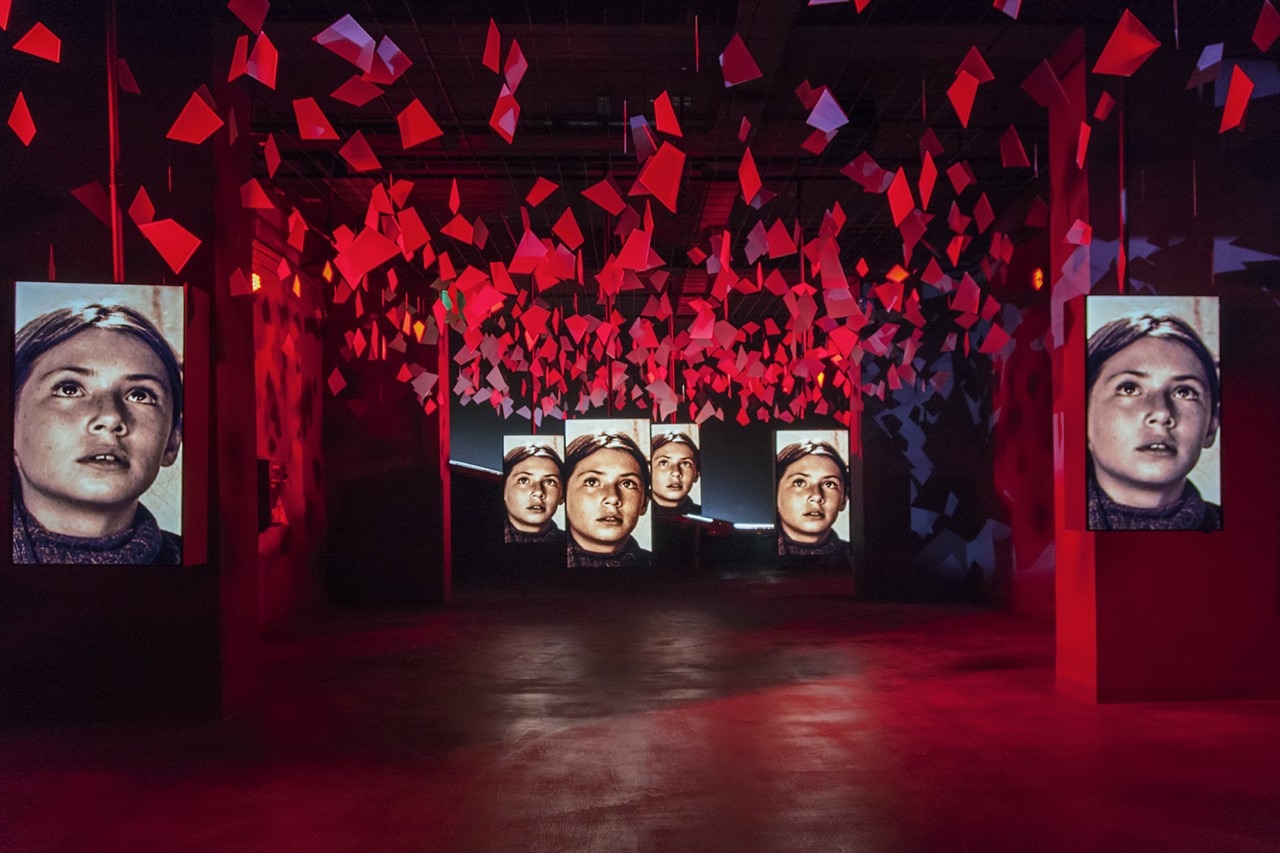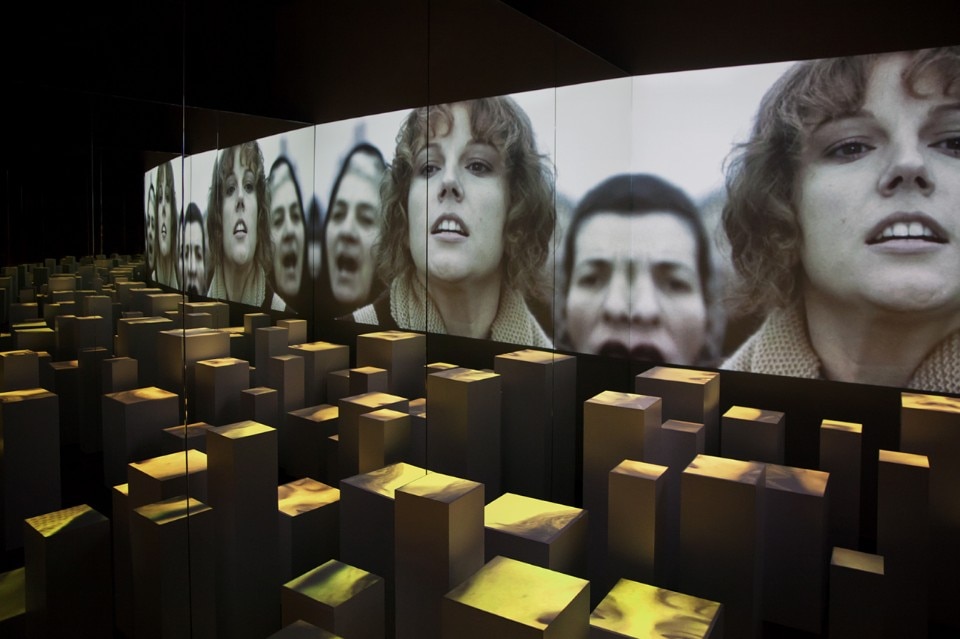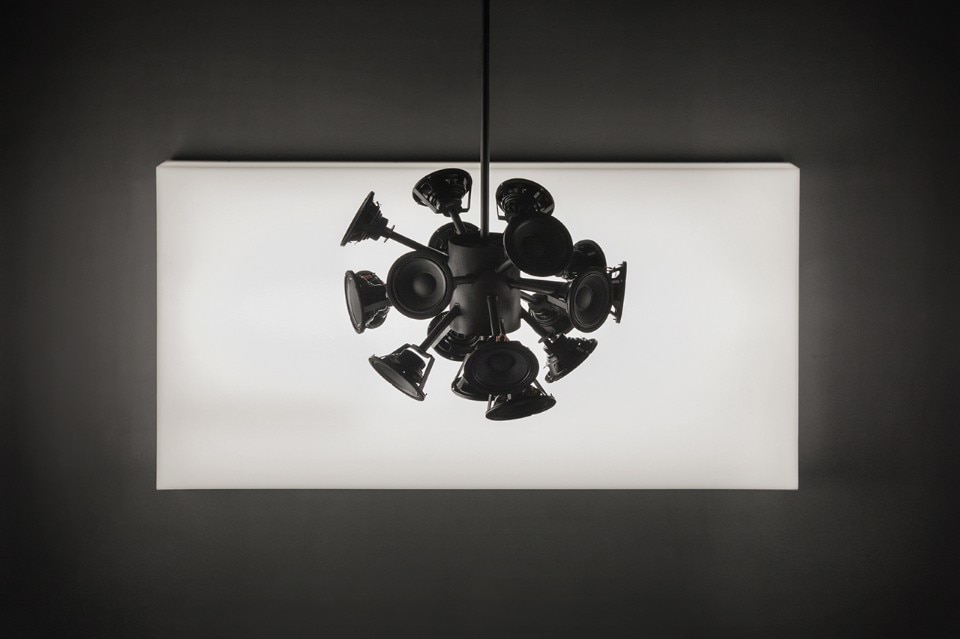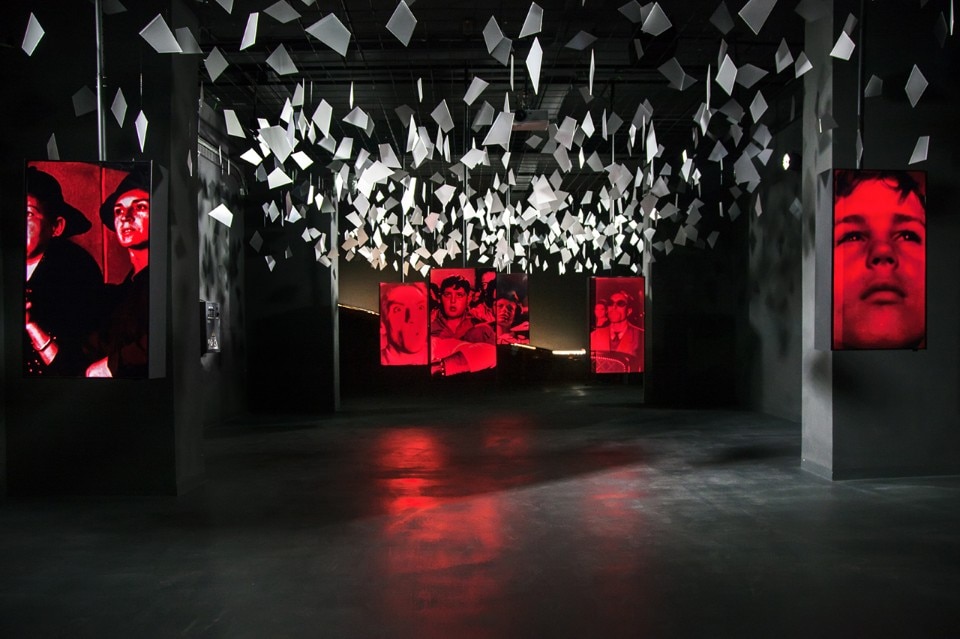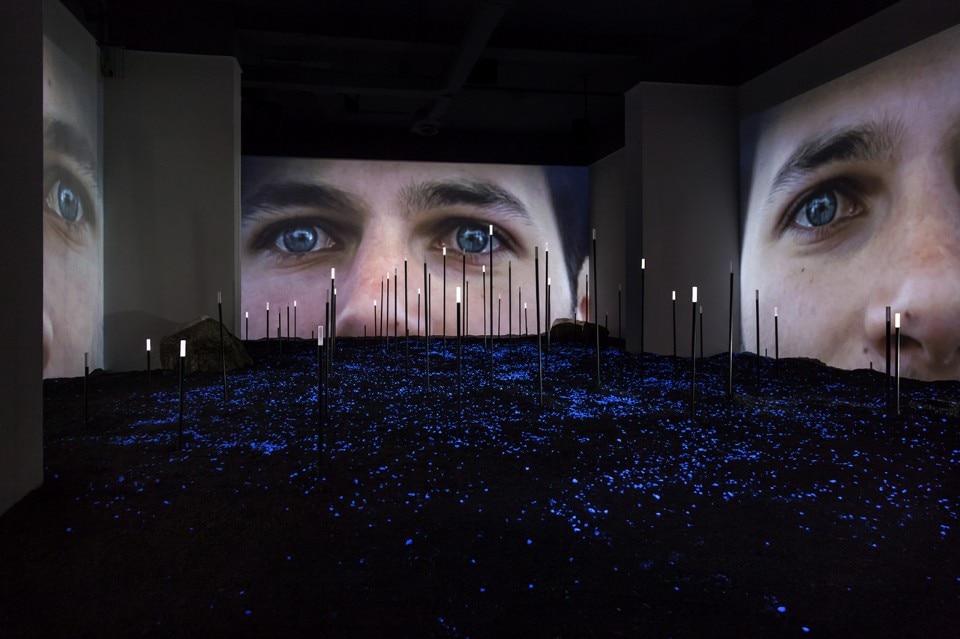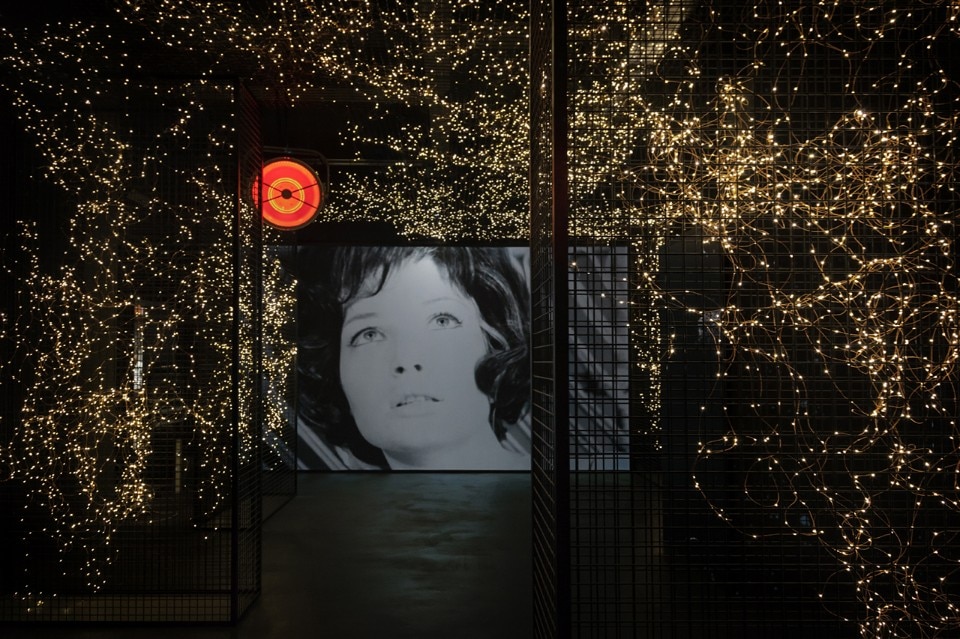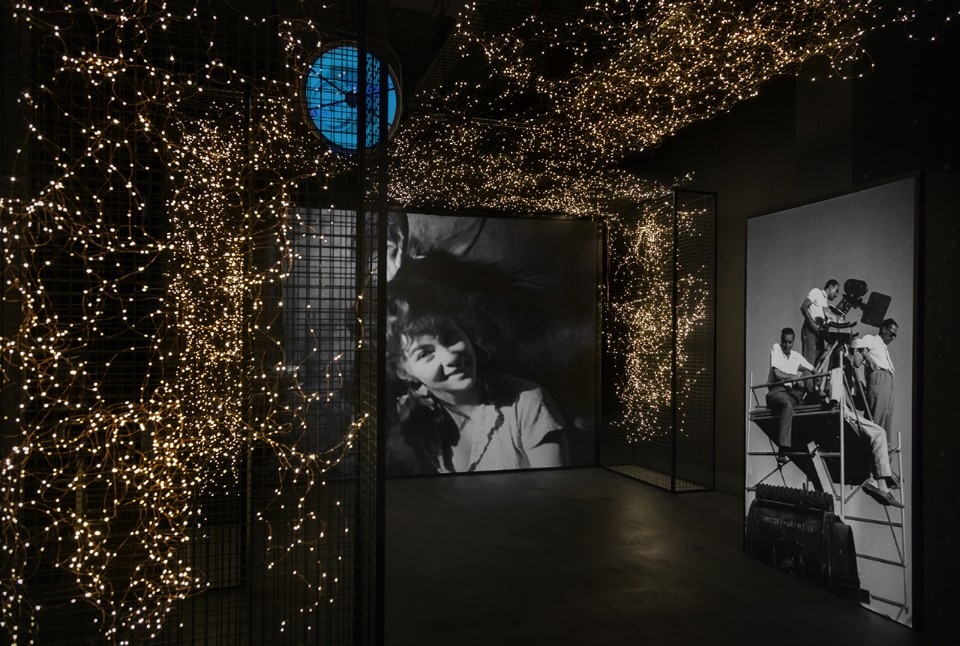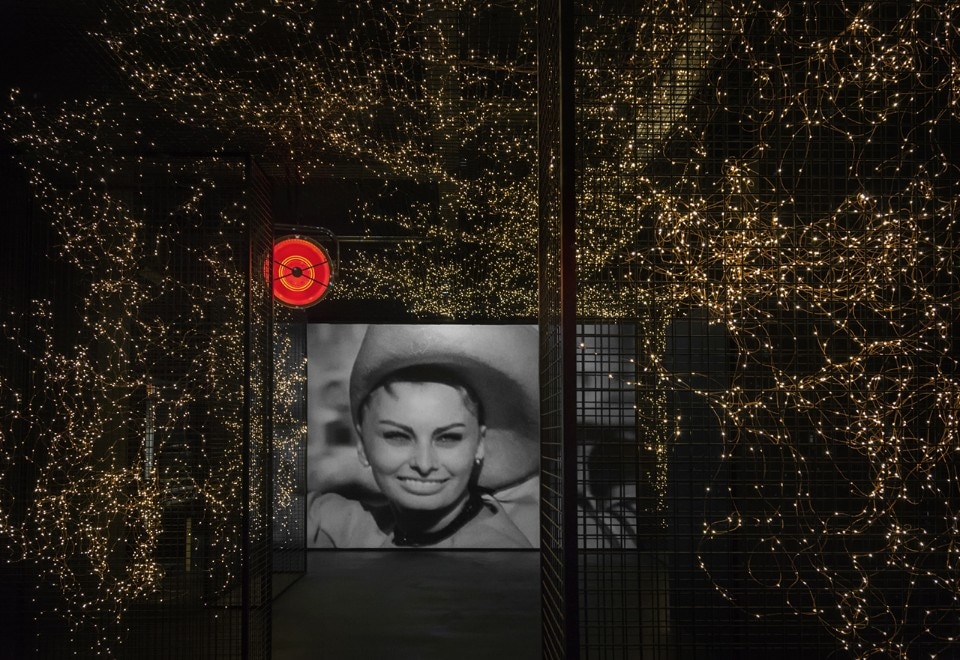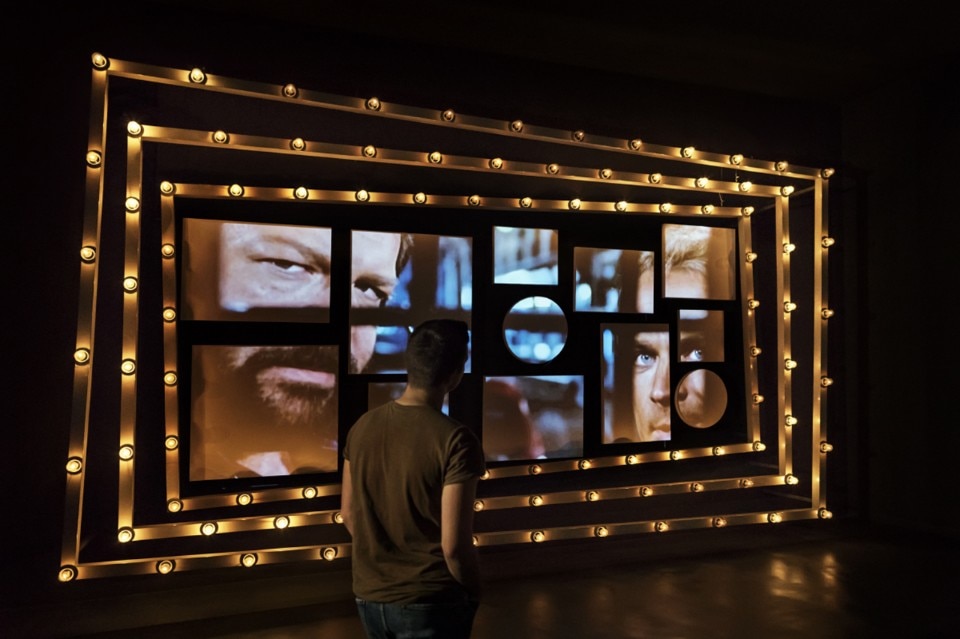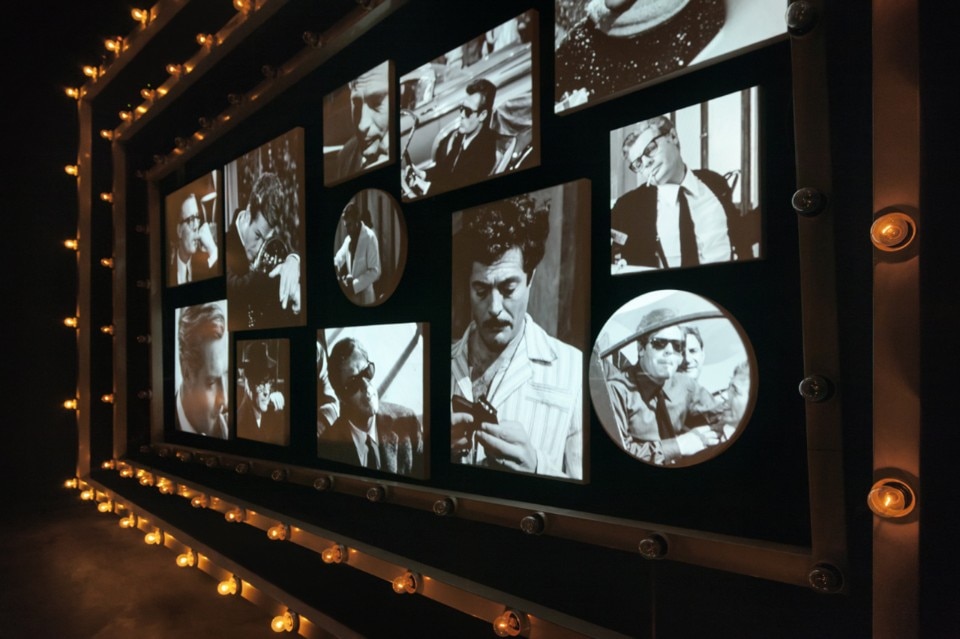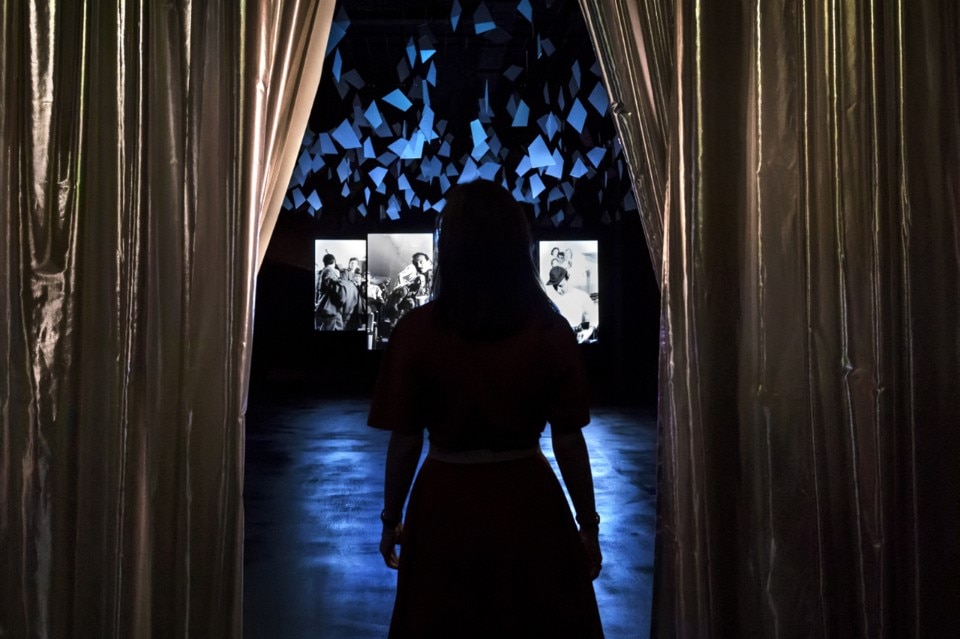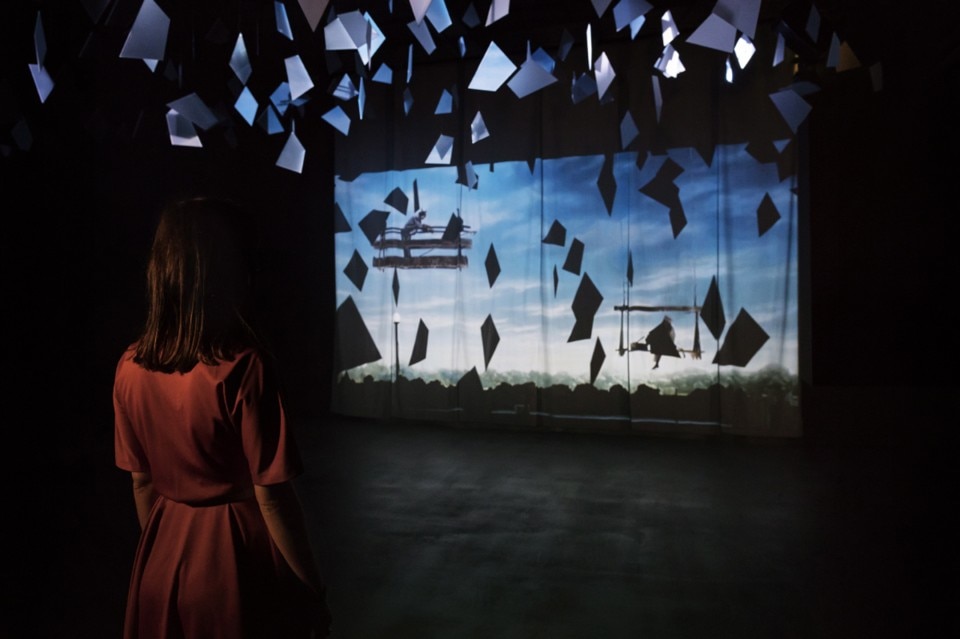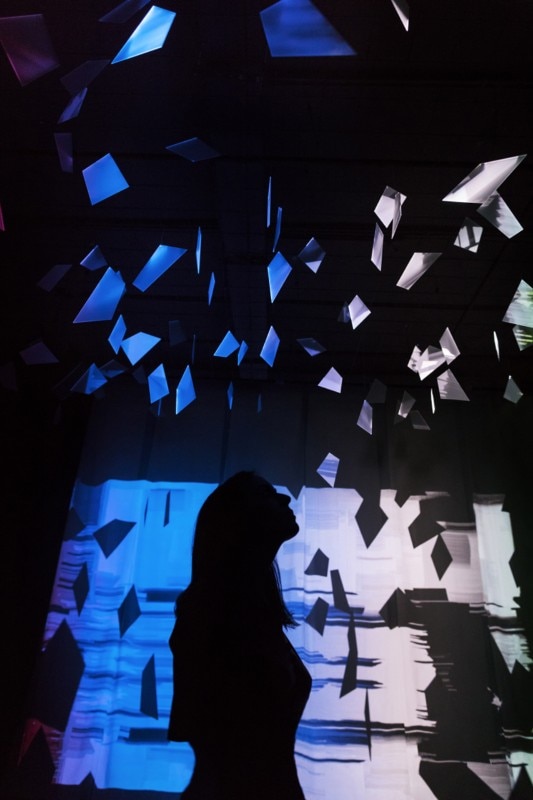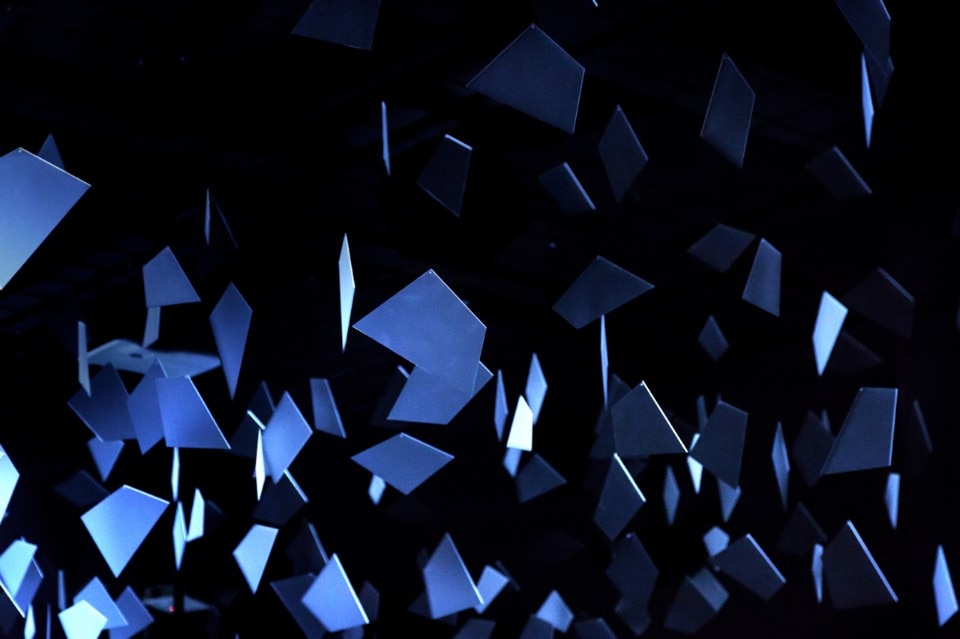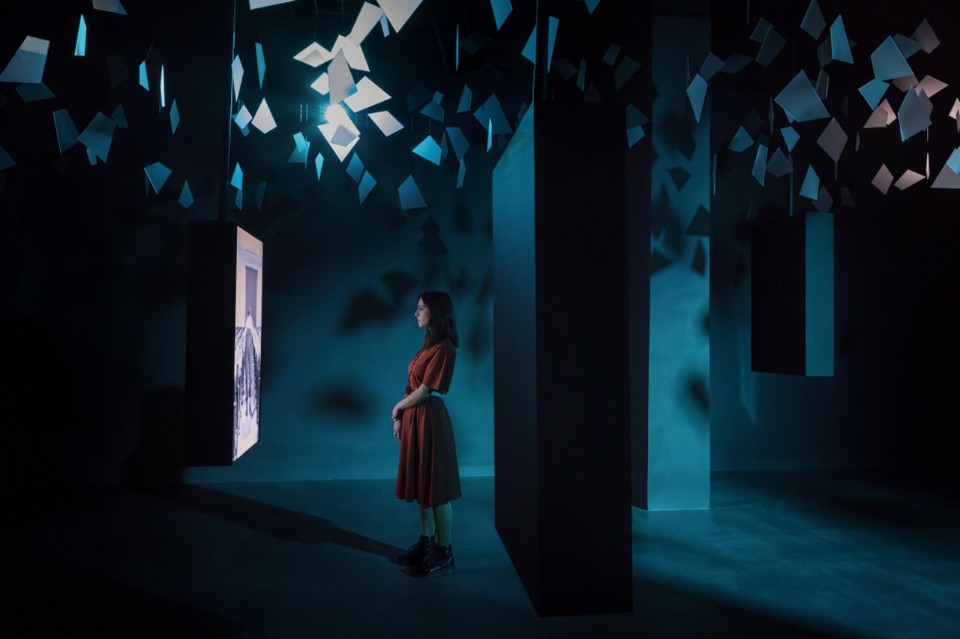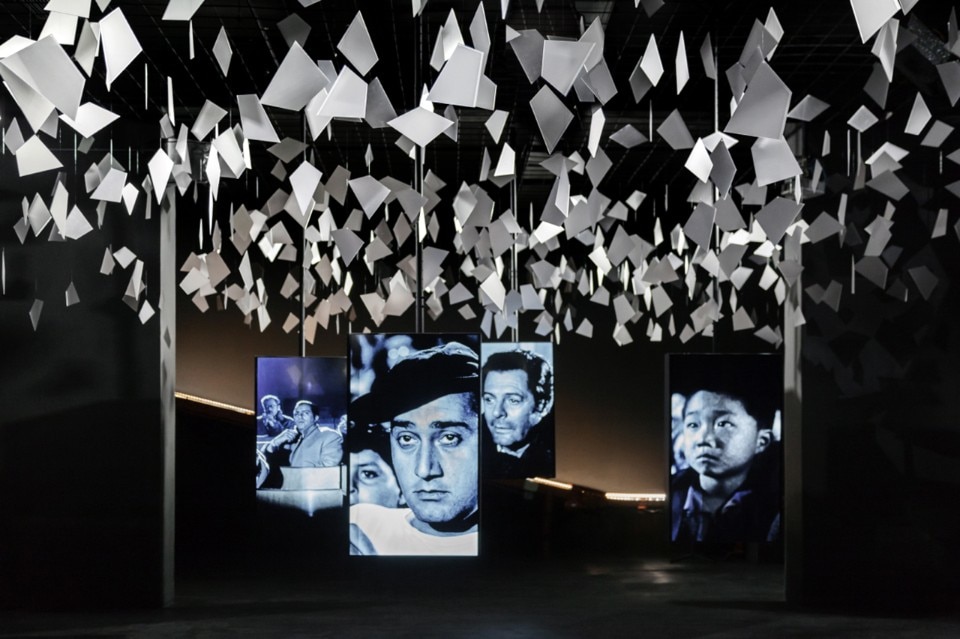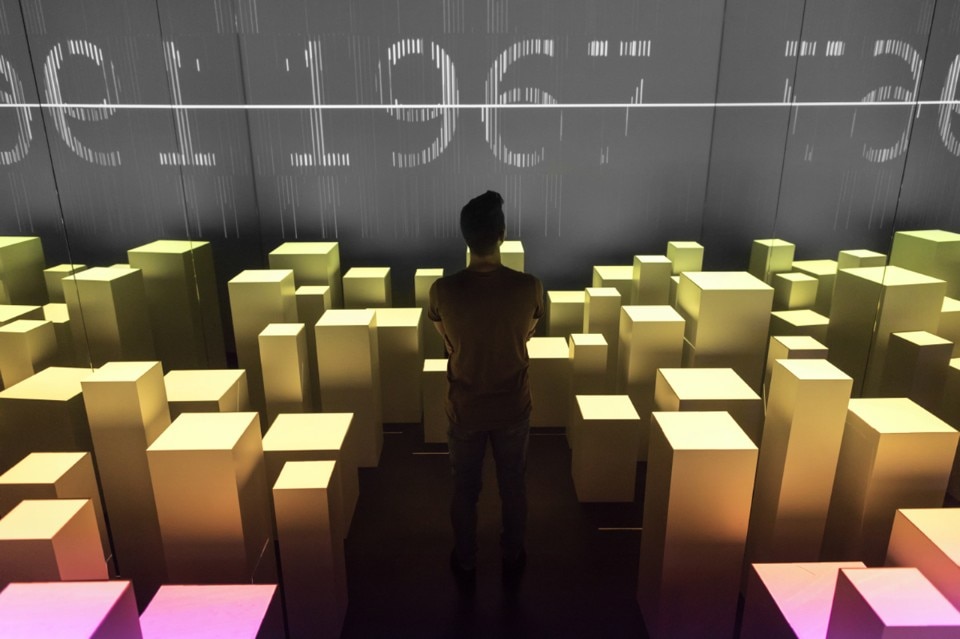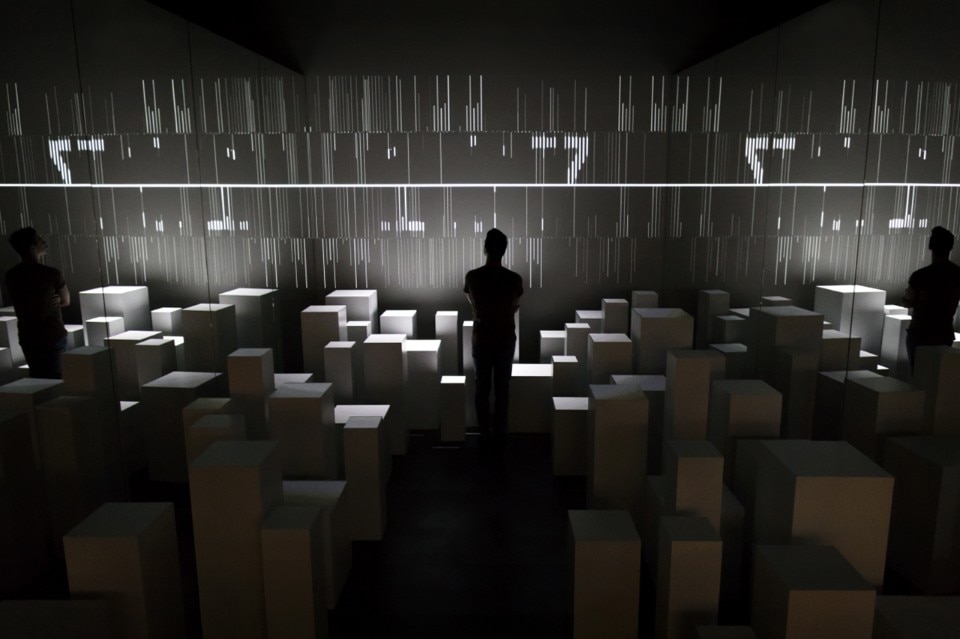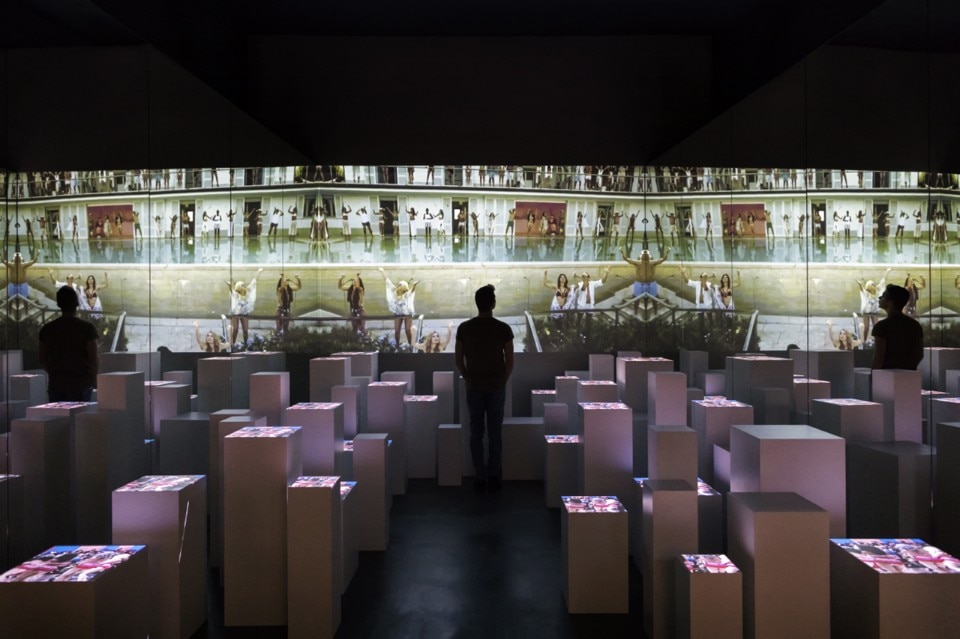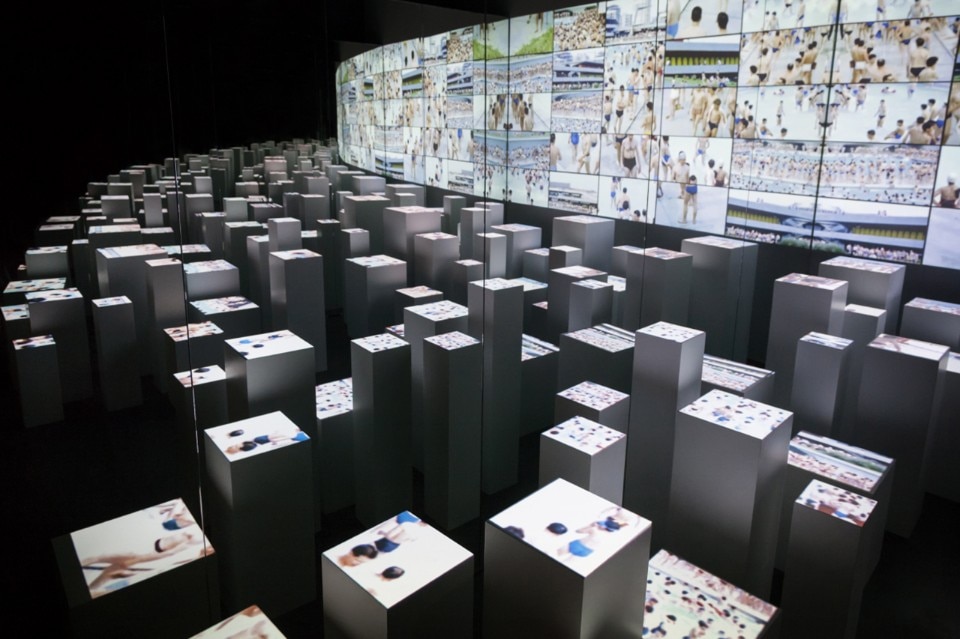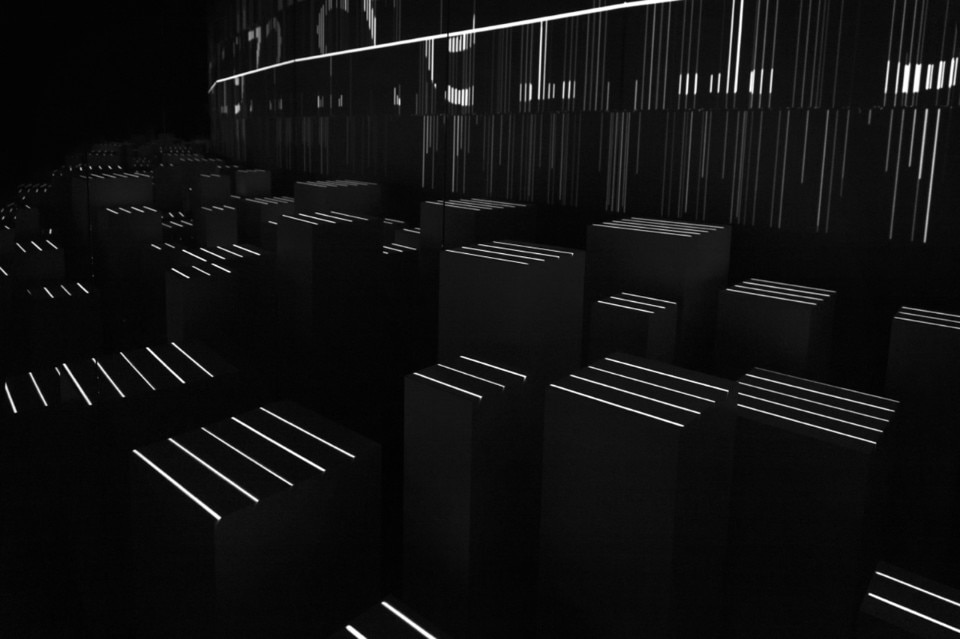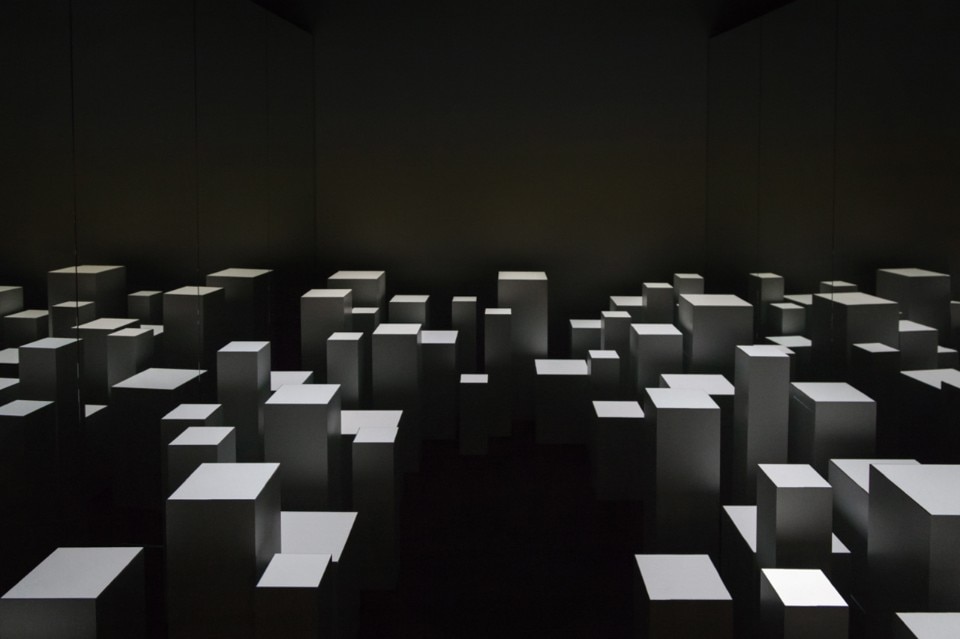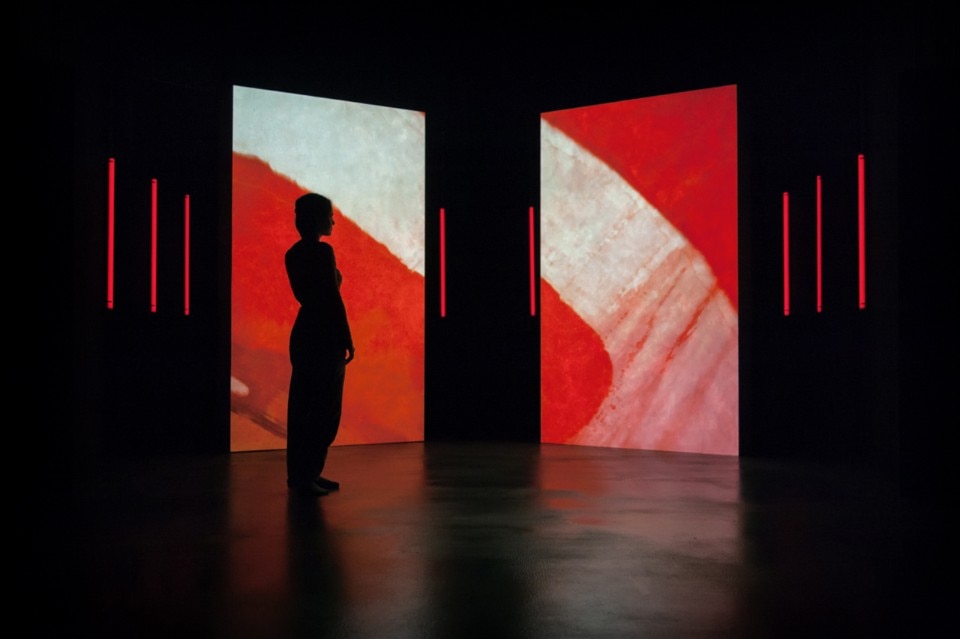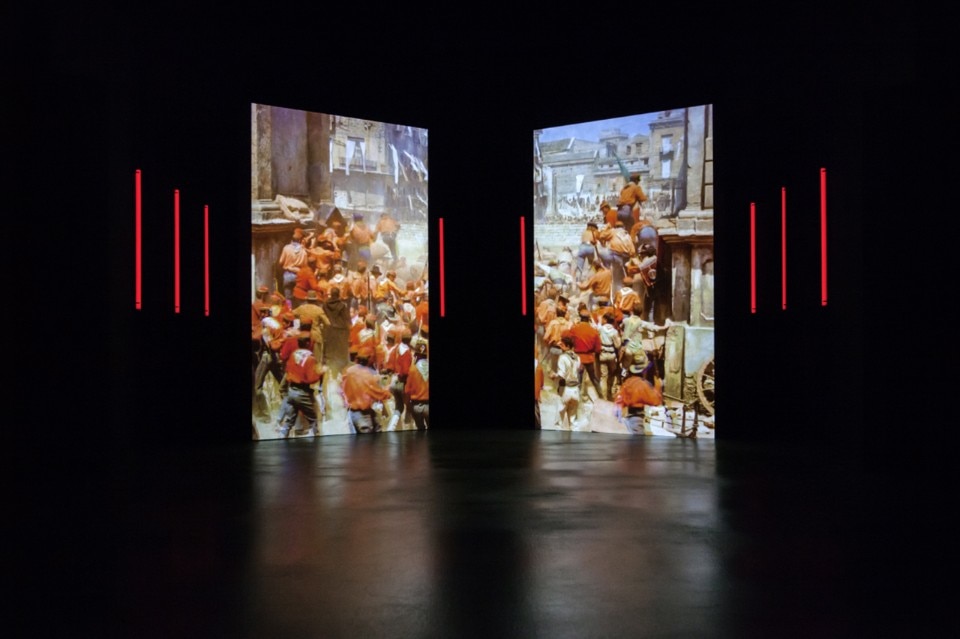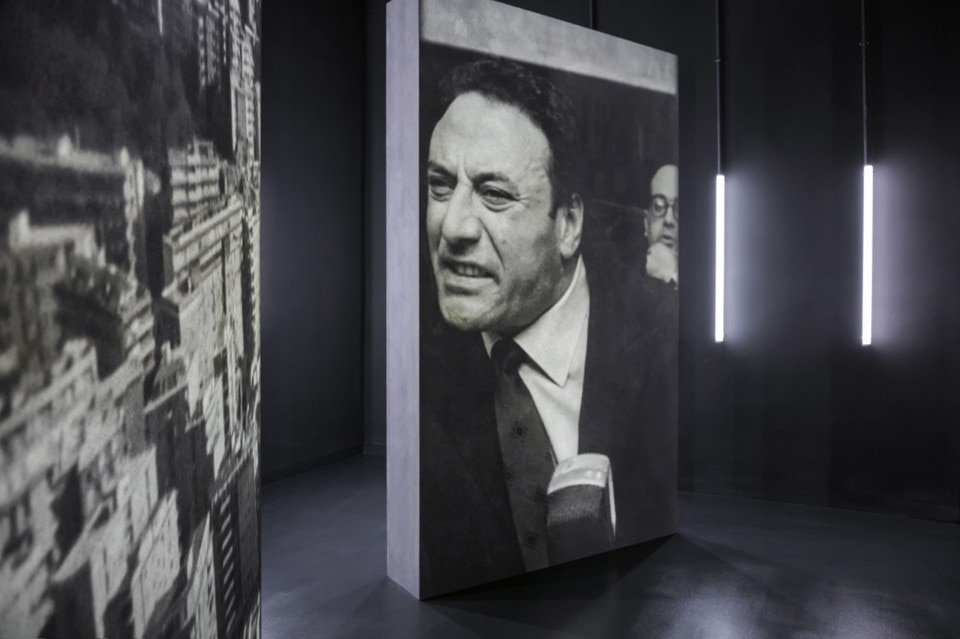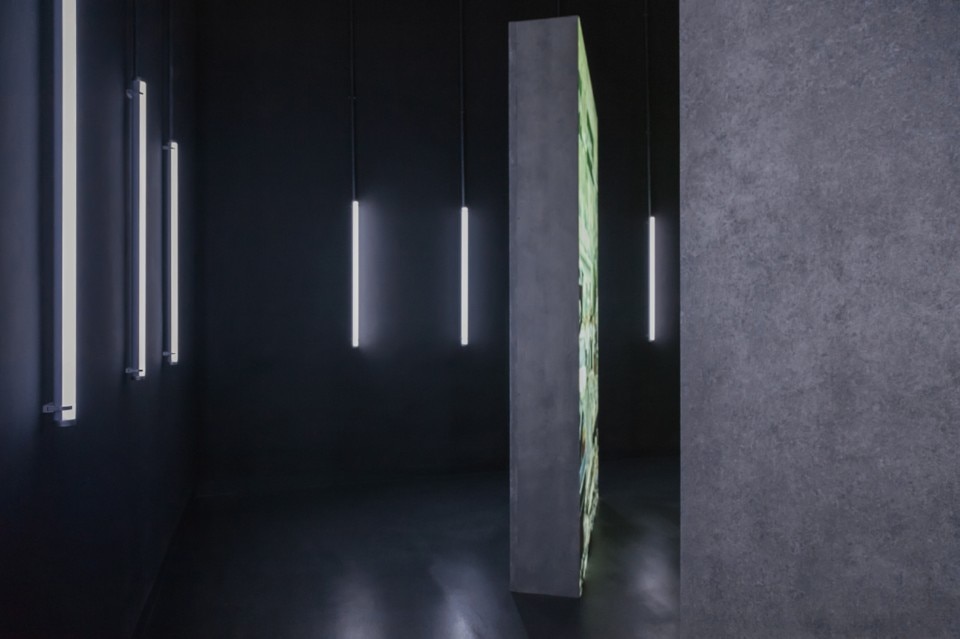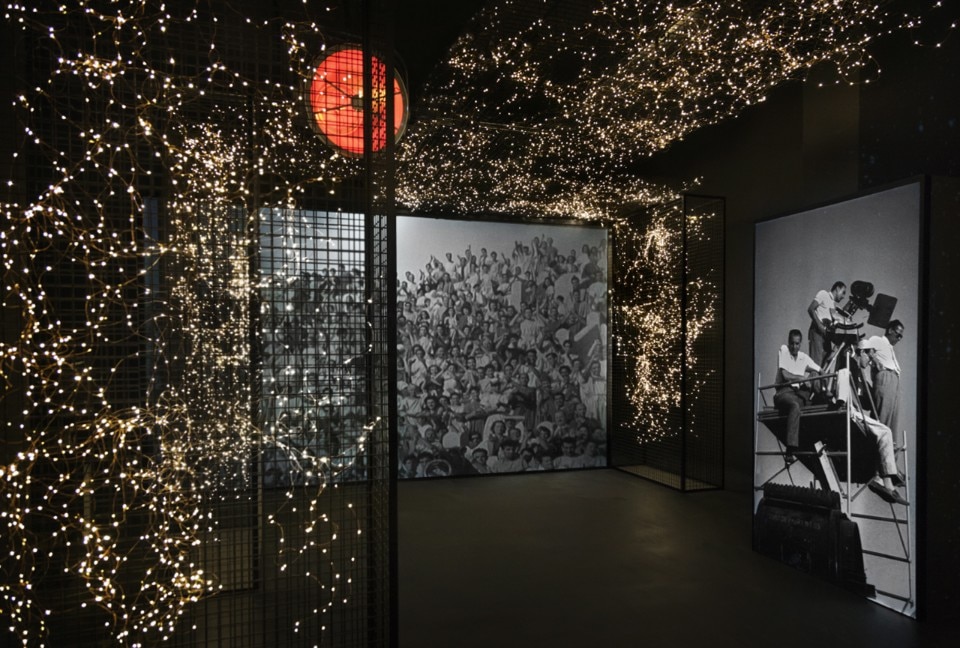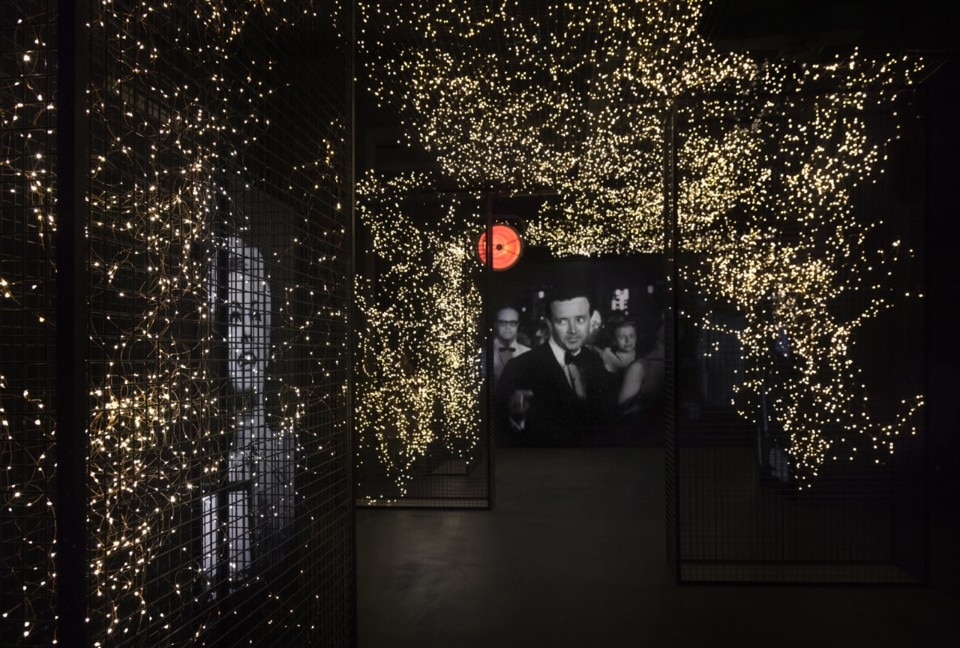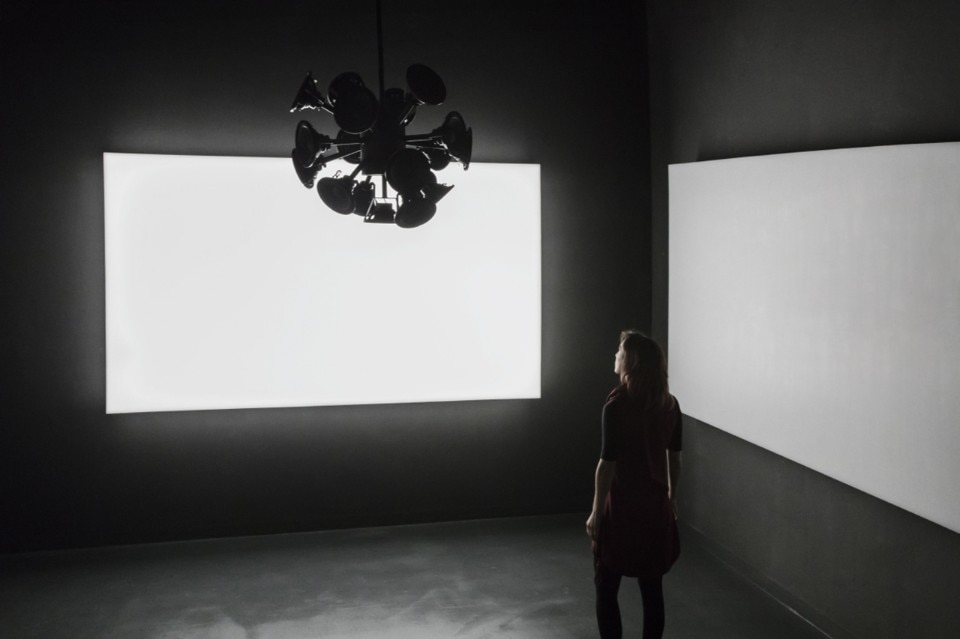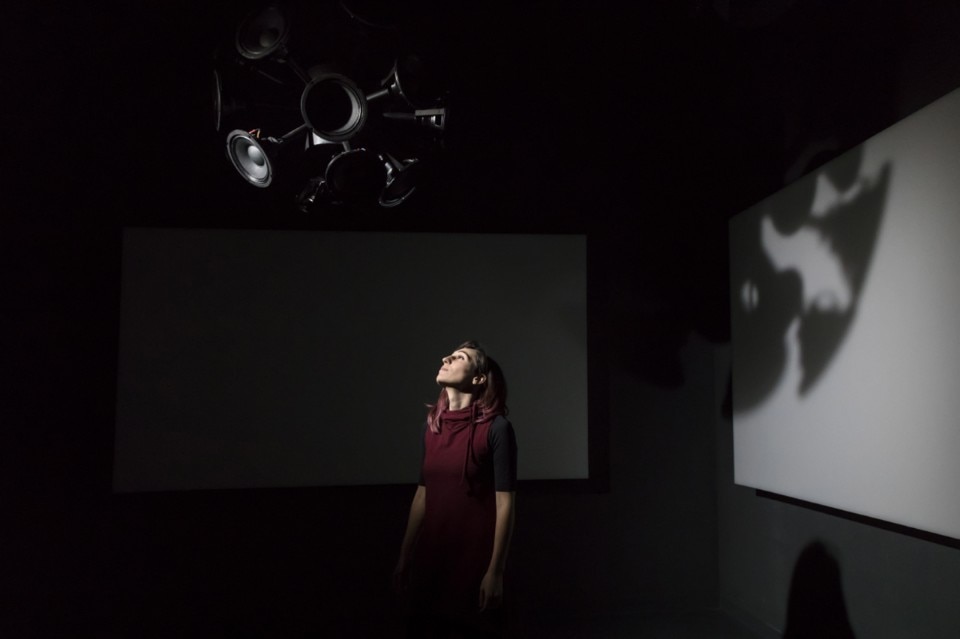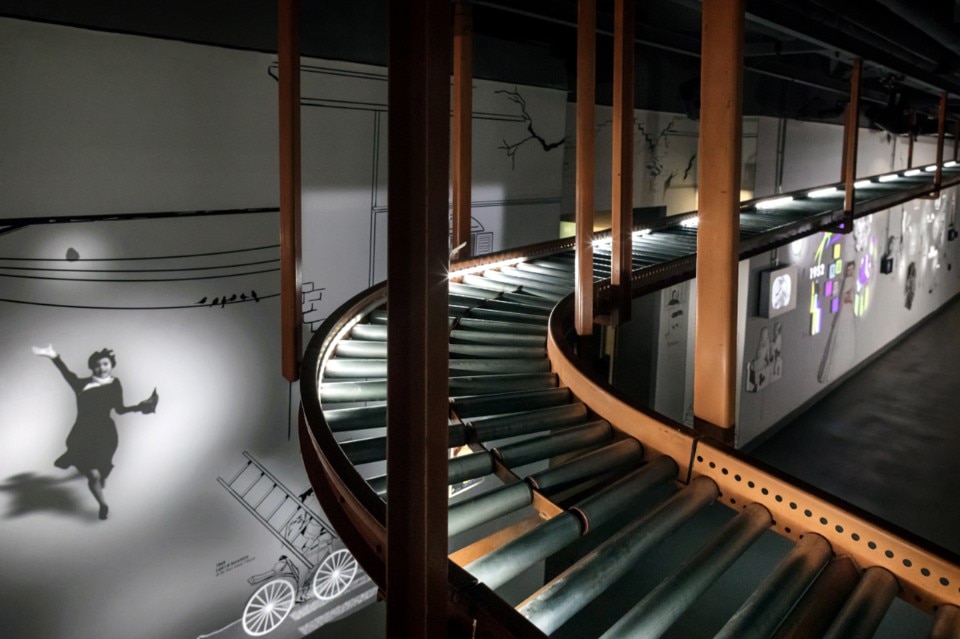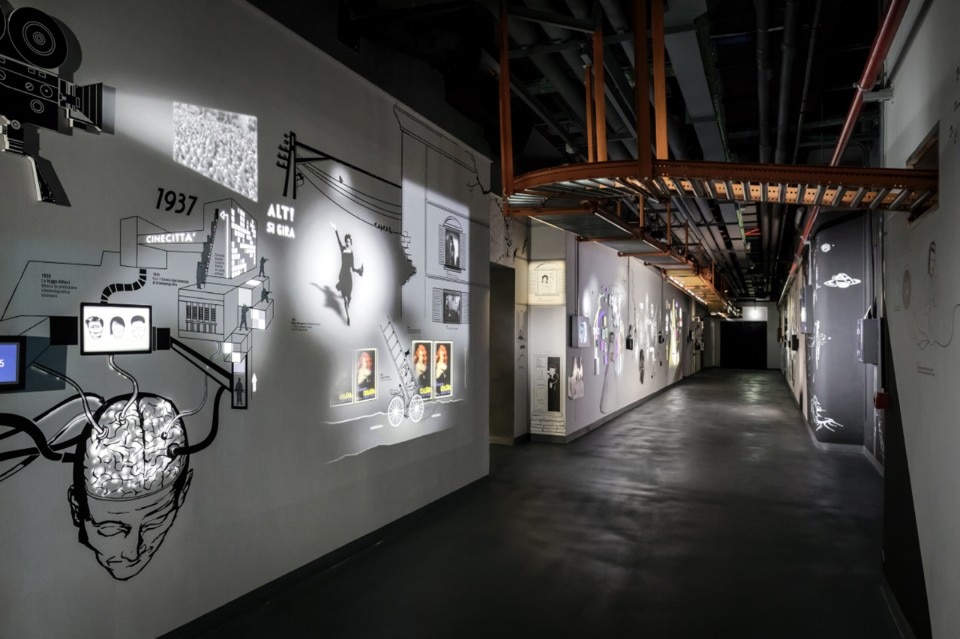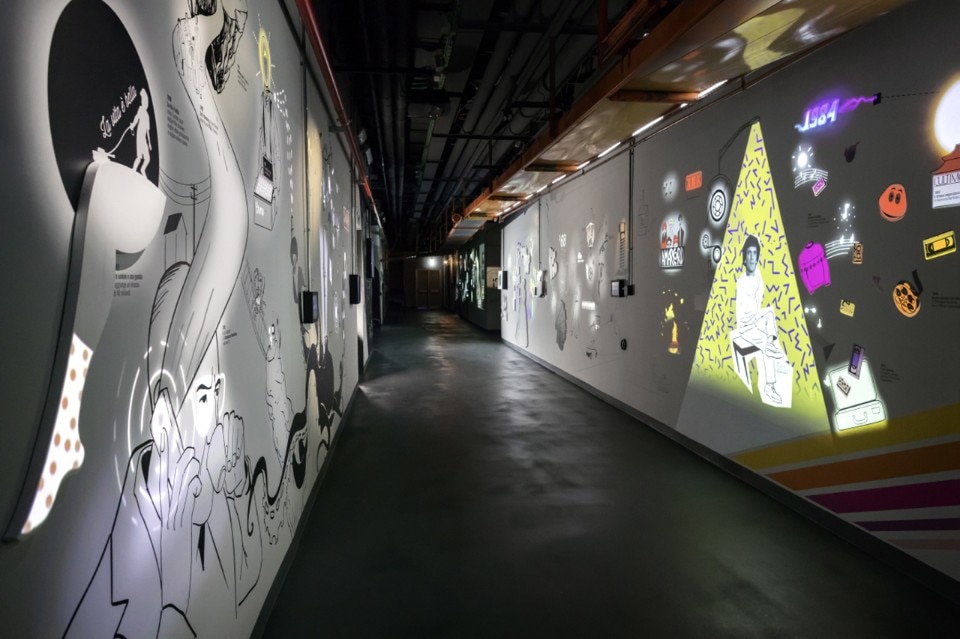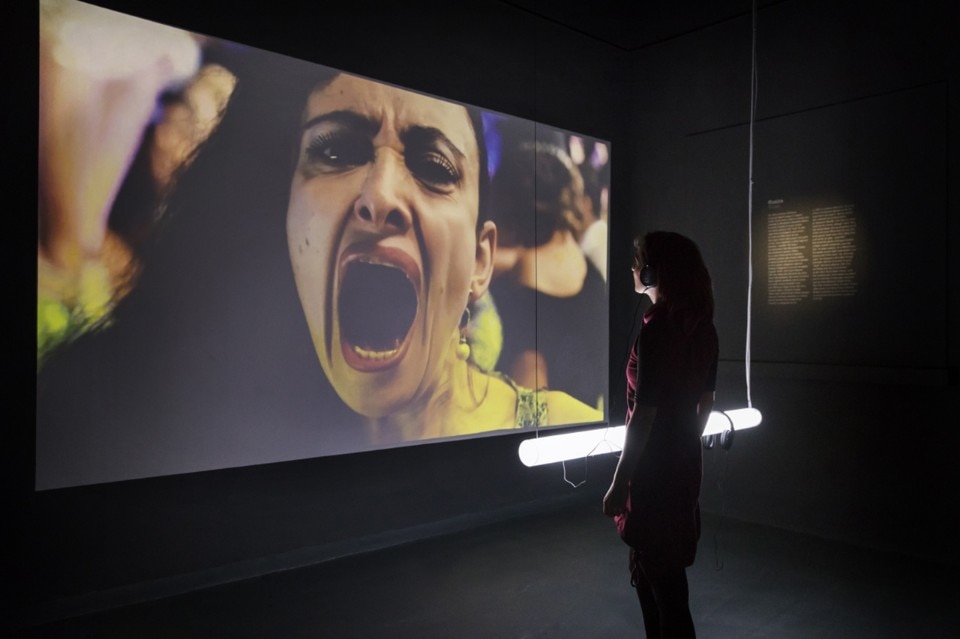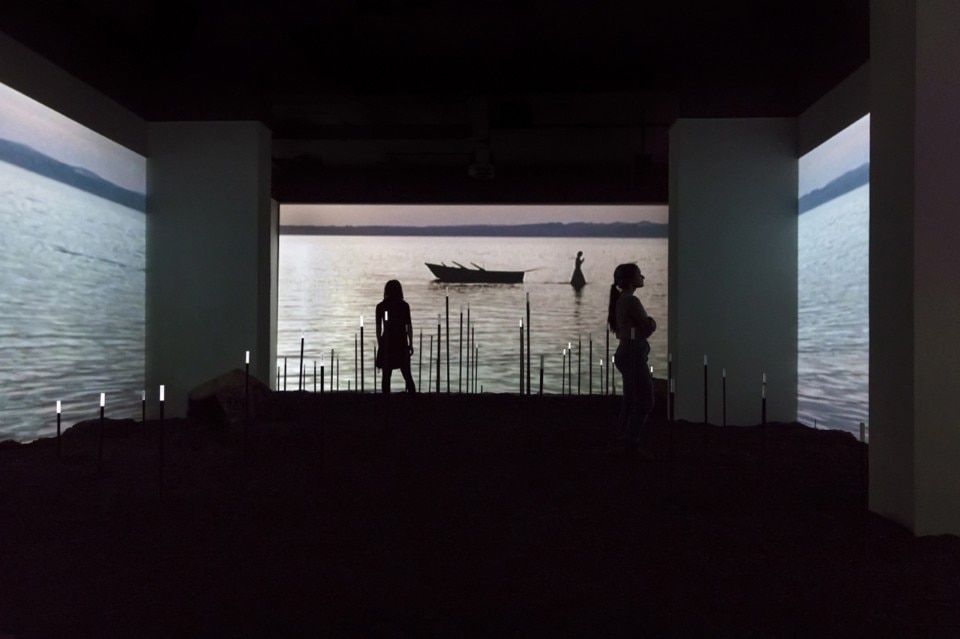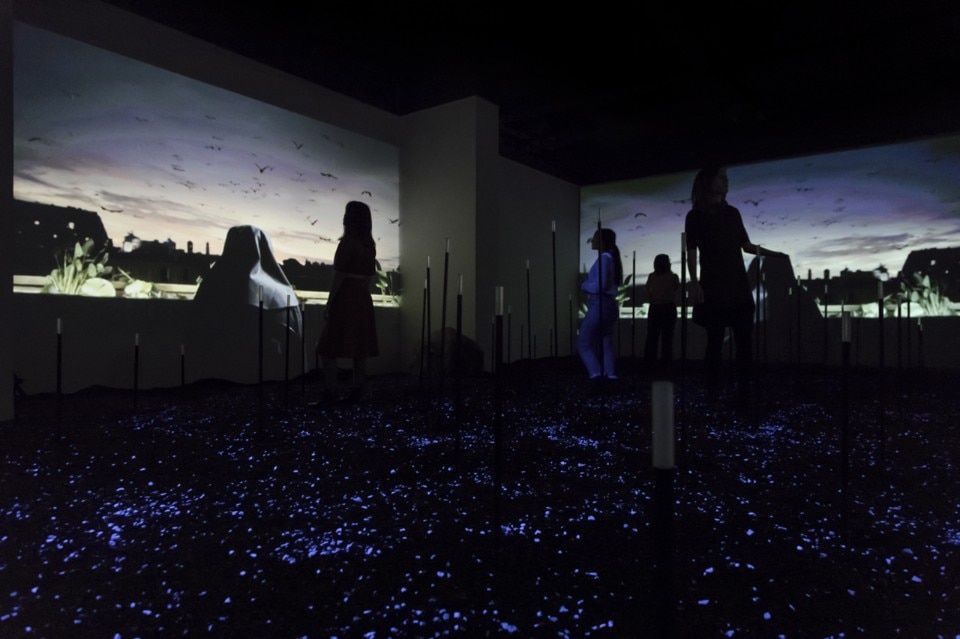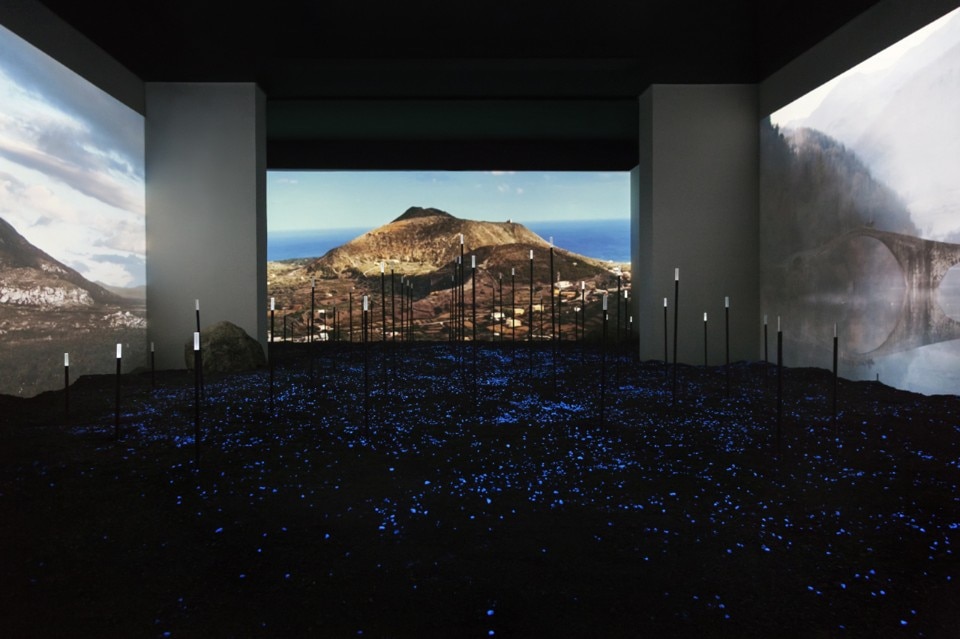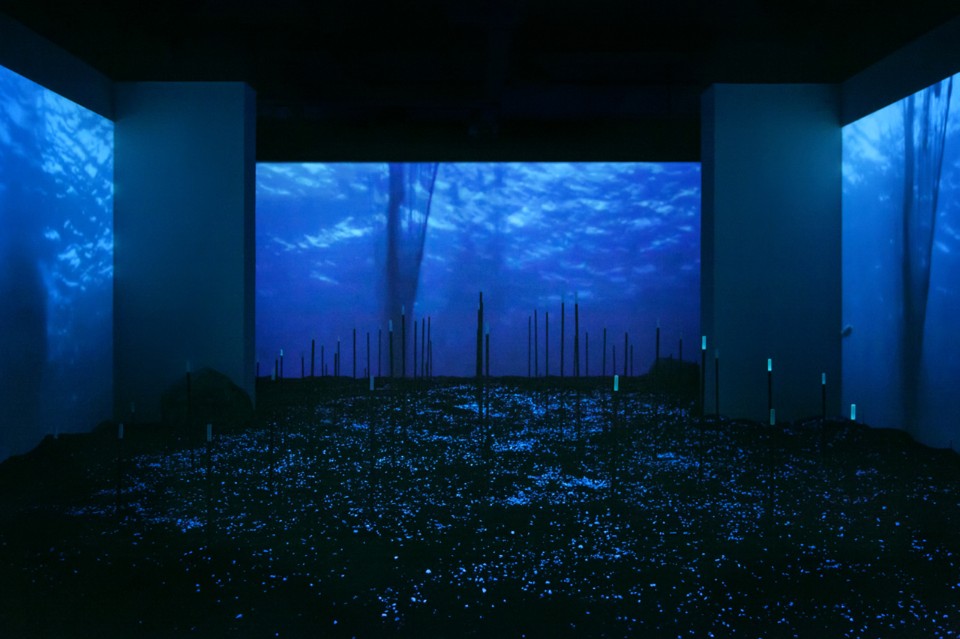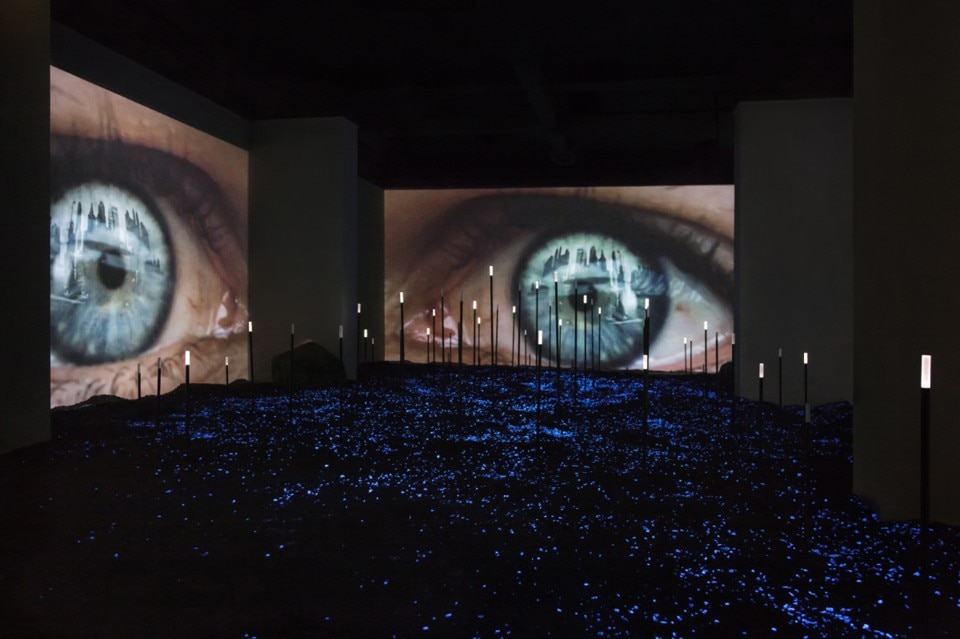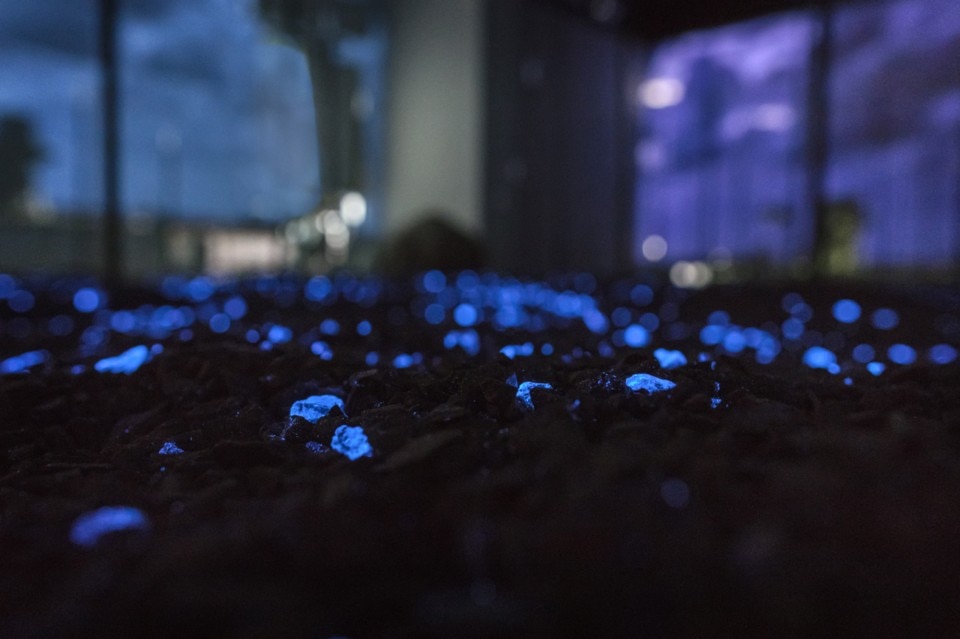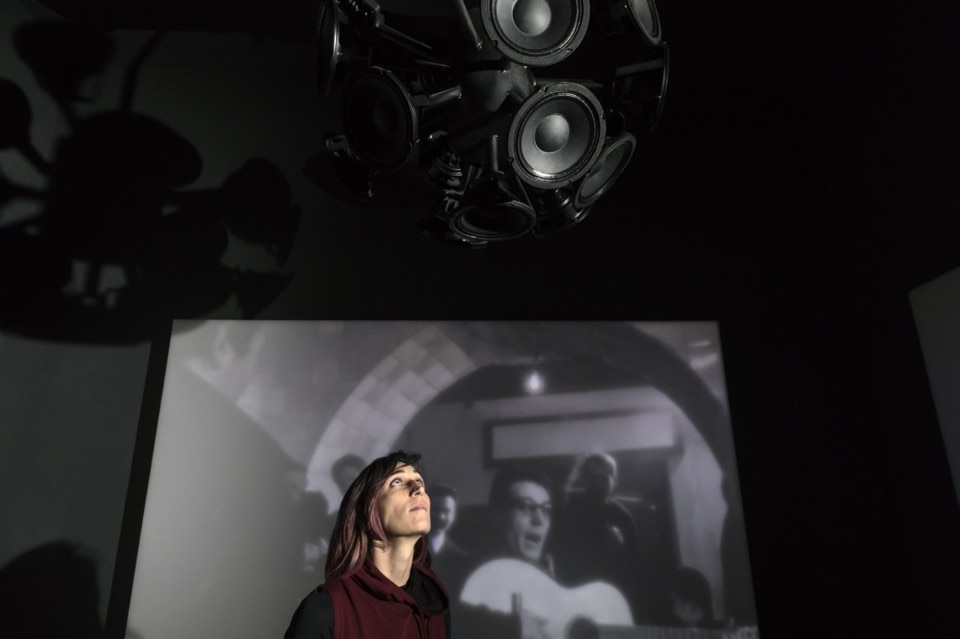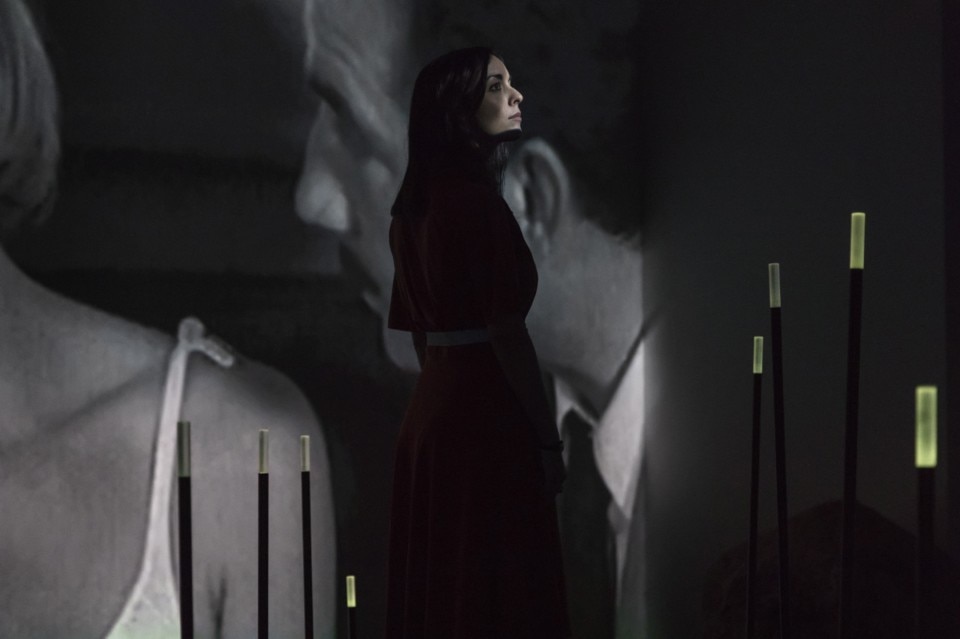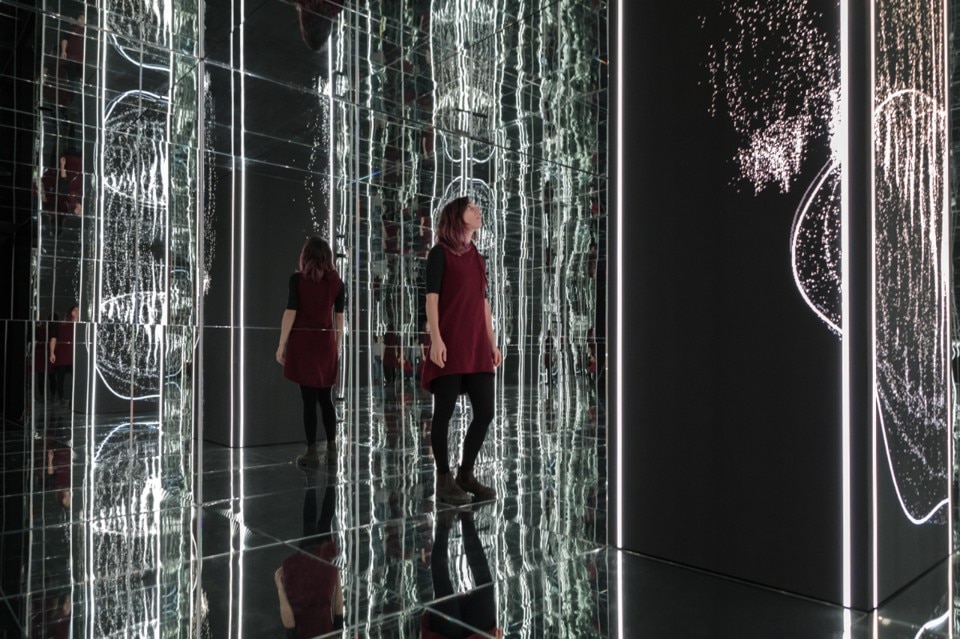The protagonists of the new MIAC – Italian Museum of Audiovisual and Cinema are the artists of None Collective, who designed the layout of the museum in a multimedia, interactive and immersive way.
The founders of the studio – Gregorio De Luca Comandini, Mauro Pace Founder and Saverio Villirillo – come from the fields of design and architecture, but through their narratives, practices, installations and exhibitions have found a unique identity that is much closer to that of the arts: “Our research focuses on the relationship between humans and machines. We use technology as a tool to create stories and experiences, experimenting with new languages that combine physical and digital elements,” the artists told us.
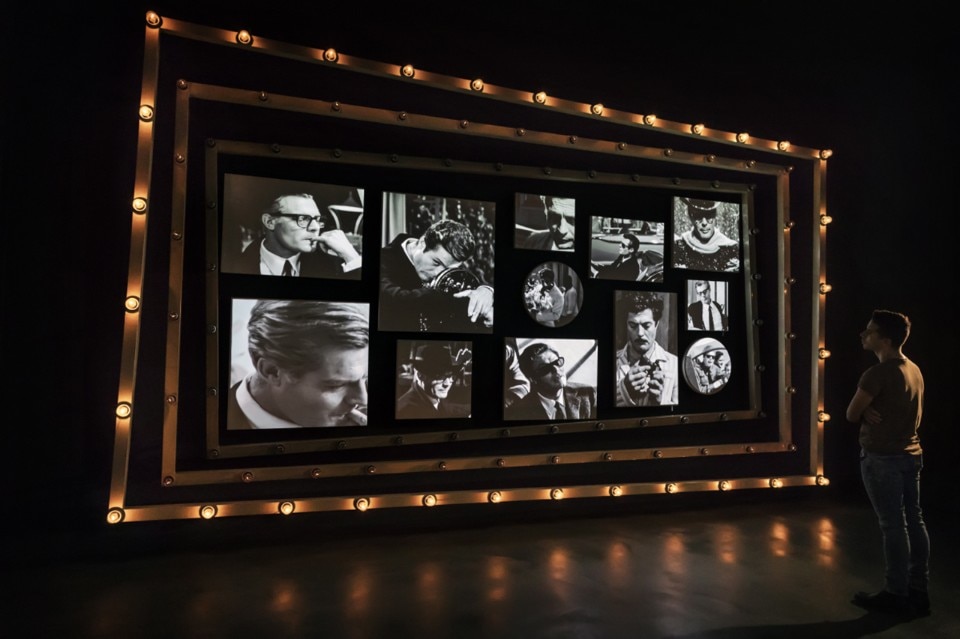
“In a time when we are witnessing the dematerialisation of design and architecture, we are trying to do the opposite: we are eliminating technological devices from the scene and trying to give a different physicality to audio-visual languages, combining them with everyday elements or natural materials. Each MIAC set design dialogues with the multimedia contents extracted from historical archives, becoming a dynamic space.”
The set-up project, winner of the call for proposals launched by the Istituto Luce-Cinecittà in 2018, re-reads the history of cinema, television and radio in a new way. “Together with the curators we have selected 12 transversal themes, which do not refer exclusively to the film industry but interpret our Italian society: power, eros, landscape, comedy, the future...” explains None Collective.
“Telling the whole story of Italian cinema without disappointing anyone is an impossible task. The consulted archives are immense and without the right approach there was the risk of not adding anything to what was done, for example, with the online archive of Istituto Luce. The result is an organic narration, even if there are also daring or dissonant combinations. If on the one hand our intention is to enhance the Italian audiovisual heritage, on the other hand we want the installations not to be surrogates for the archives but independent works, new narratives.”
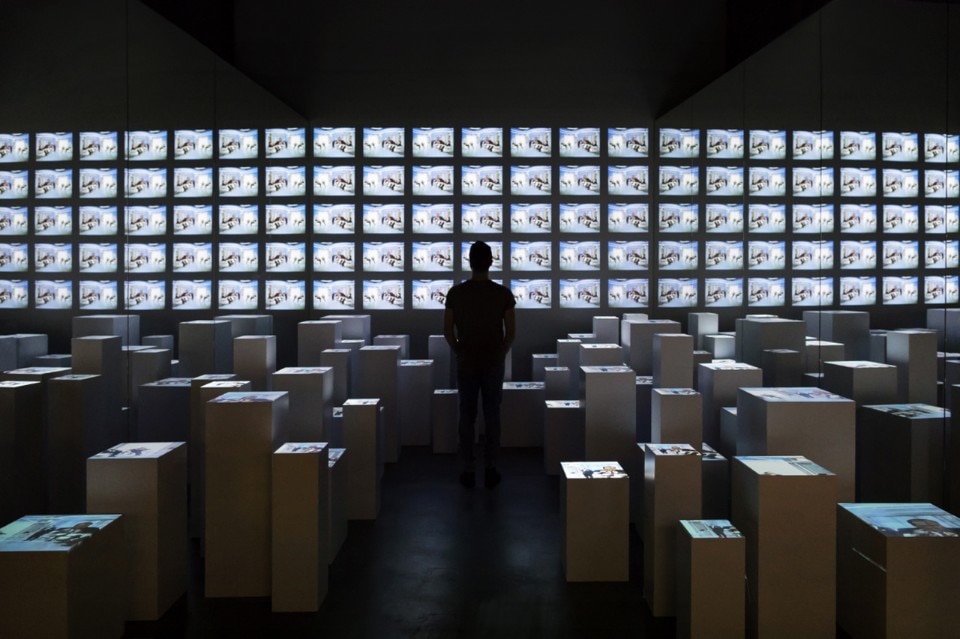
The studio expressed itself in the same hybrid language which it has developed over the years, consisting of an innovative grammar. “In architecture, the classic elements are form, material and natural light. We also add other ingredients that make up the work: artificial light, whose potential is now infinite: from lasers to projections, passing through lenses and mechanisms that modify rays of light; sound is a world of which we are not aware and that always constitutes 50% of the experience, because it acts directly on the unconscious, goes deeper; set design finally reacts to the presence and behavior of visitors. Our work as director orchestrates all these elements to make them in tune and synchrony. Time is therefore a fundamental factor in defining transmedia scenarios,” say Gregorio, Mauro and Saverio.
“Rather than the classic educational exhibition, we have developed a multisensory experience, which is able to bring together a wide audience. We know that museum visitors are increasingly inattentive and we try to capture them gradually, at first stimulating perception and emotion, and then with multiple levels of understanding.”


